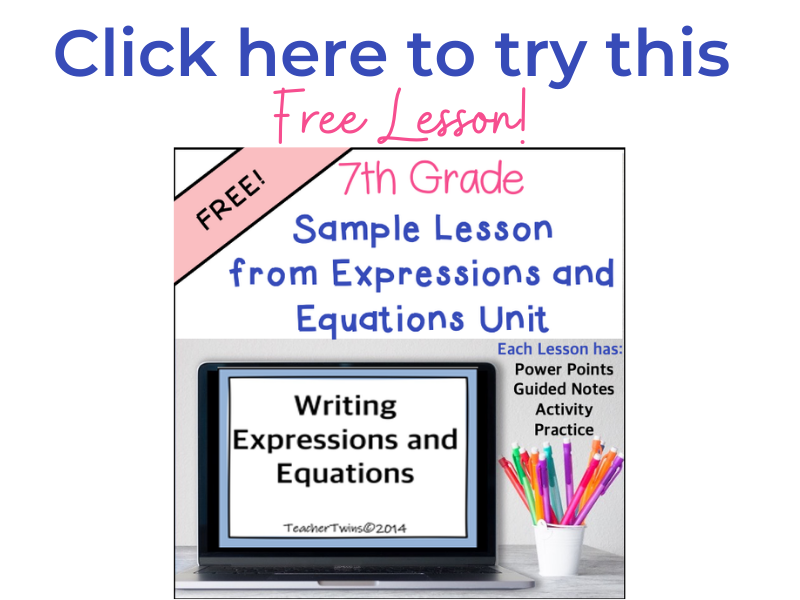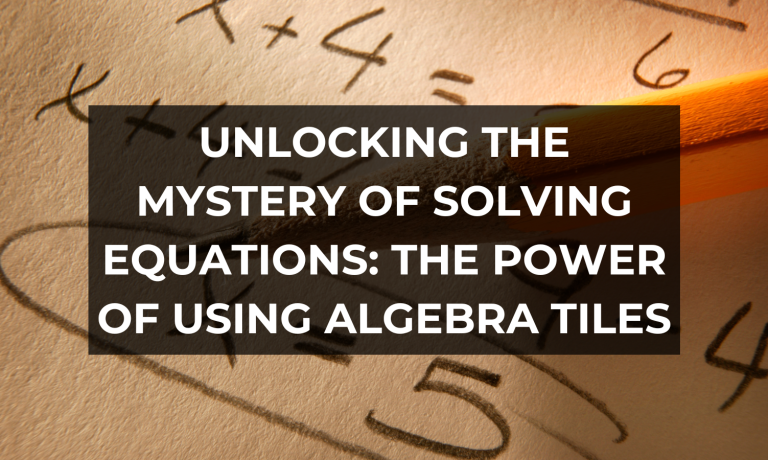Solving equations can often appear daunting and overwhelming, leaving students feeling lost and frustrated. But with the help of algebra tiles, this complex subject becomes accessible and even enjoyable.
Algebra tiles bridge the gap between the abstract world of mathematics and the concrete realm of our senses. They provide a hands-on approach to learning, enabling students to understand solving equations more effectively.
These versatile tools are the secret to unlocking the mystery of solving equations. By using algebra tiles, students can build a solid foundation in algebra, leading to greater success in higher-level math studies. The tactile nature of these tiles engages multiple senses, enhancing the understanding and retention of mathematical concepts.
How Algebra Tiles Work
Algebra tiles are physical manipulatives that represent numbers and variables in a visual and tangible way. They come in different shapes and colors, each representing a specific value or variable. These tiles can be arranged and manipulated to model equations and expressions. By physically moving and rearranging the tiles, students can see how the different components of an equation interact with one another. This visual representation helps students make connections between the abstract symbols on paper and the real-world concepts they represent.
In addition to their visual representation, algebra tiles also have numerical values assigned to them. This allows students to perform calculations and solve equations using the tiles. By combining the visual and numerical aspects, algebra tiles provide a holistic approach to learning algebra.
Using algebra tiles, students can add, subtract, multiply, and divide the tiles to solve equations. They can also represent variables and constants, allowing them to solve for unknowns. The tiles provide a concrete way to understand and manipulate the abstract rules of algebra.
Benefits of Using Algebra Tiles
The use of algebra tiles offers several benefits for students learning algebra. Firstly, they provide a visual and tactile representation of abstract concepts, making them more accessible and understandable. This hands-on approach appeals to different learning styles and helps students grasp complex ideas more easily.
Algebra tiles also promote active engagement and participation in the learning process. Students are actively involved in manipulating the tiles, experimenting with different arrangements, and exploring mathematical relationships. This active learning approach fosters a deeper understanding and retention of the material.
Furthermore, algebra tiles promote critical thinking and problem-solving skills. By using the tiles to model equations, students can visualize the steps involved in solving the problem. This visual representation helps them identify patterns, make connections, and develop strategies for solving equations.
Another benefit of algebra tiles is their ability to scaffold learning. They provide a concrete representation of abstract concepts, allowing students to gradually transition from the concrete to the abstract. As students become more comfortable with the tiles, they can gradually reduce their reliance on them and rely more on symbolic notation.
Overall, the use of algebra tiles enhances students’ mathematical proficiency and confidence. It empowers them to tackle challenging equations and develop a deeper understanding of algebraic concepts.
Solving One-Step Equations with Algebra Tiles
One-step equations are a fundamental concept in algebra, and algebra tiles provide a powerful tool for solving them. Let’s consider an example equation: “x + 2 = 5.” To solve this equation using algebra tiles, we can start by representing the variables and constants.
We can use a green rectangle to represent the variable “x” ,two yellow square tiles to represent the constant “2” and 5 yellow square tiles to represent the constant “5.” We then arrange these tiles on each side of the equation mat. The equal sign is the middle of the mat. The goal is to isolate the variable on one side of the equation.
To balance the equation, we need to perform the same operation on both sides. Since we have a positive 2 on the left side, we can remove 2 yellow squares from that side by creating zero pairs. We do this by pairing each yellow with a red tile(negative). We also need to add 2 red tiles to the other side of the equation to maintain equality. This leaves us with “x = 3” as the solution. Watch the video for a visual explanation of the steps.
Try these one-step equation task cards for extra practice using algebra tiles.
Solving Two-Step Equations with Algebra Tiles
Two-step equations introduce an additional level of complexity, but algebra tiles can still simplify the process. Let’s consider the equation “3x – 4 = 8″ as an example. To solve this equation using algebra tiles, we can represent the variables and constants as before.
Using green rectangles for the variable “x” we place three of these rectangles on one side of the equation mat. We also use four red squares to represent the constant “-4 and 8 yellow squares to represent “8”. The goal, as with one-step equations, is to isolate the variable on one side. Follow the steps below to see how to use algebra tiles to solve the equation.
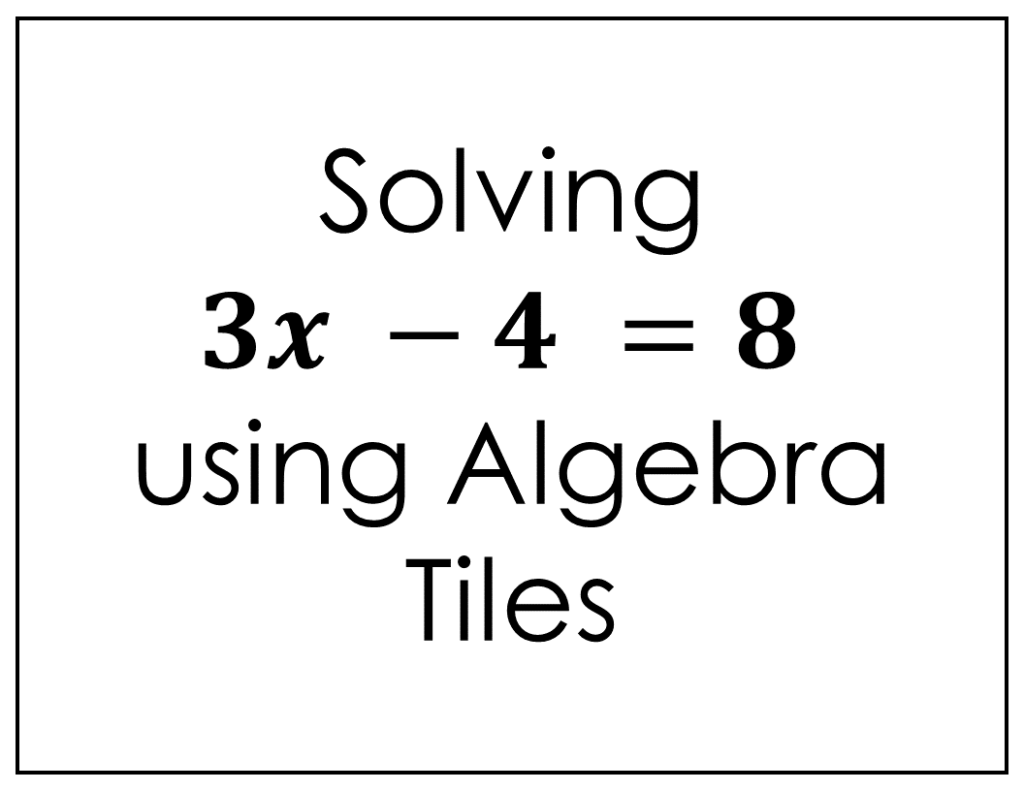
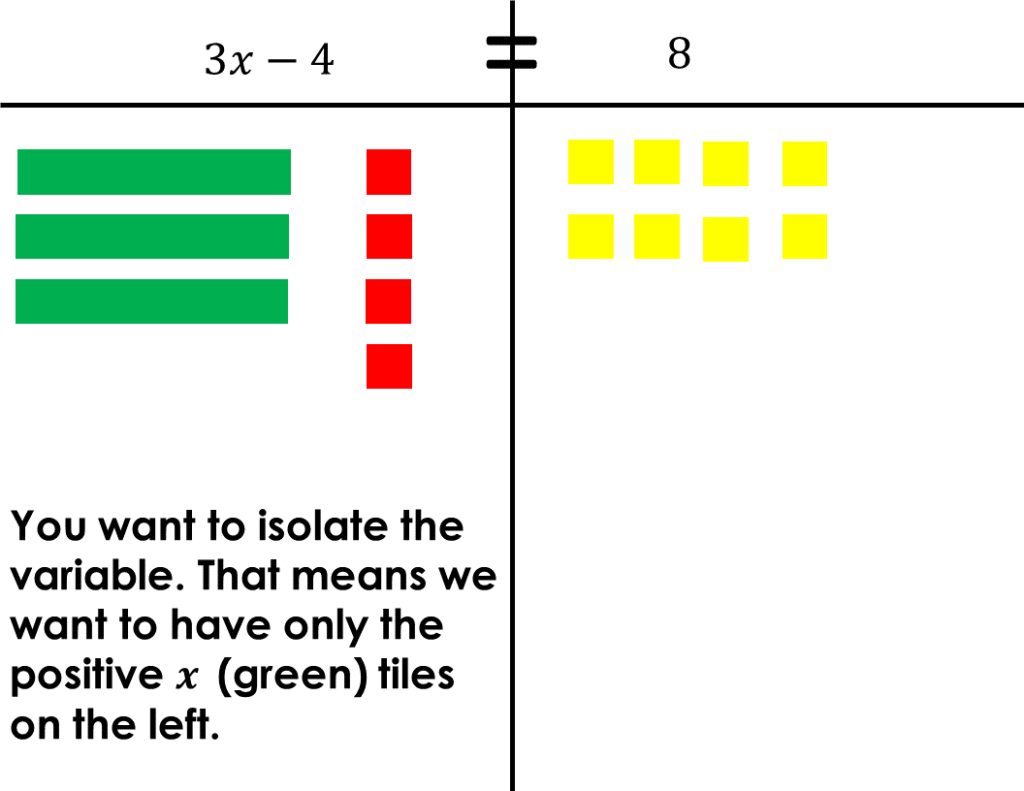
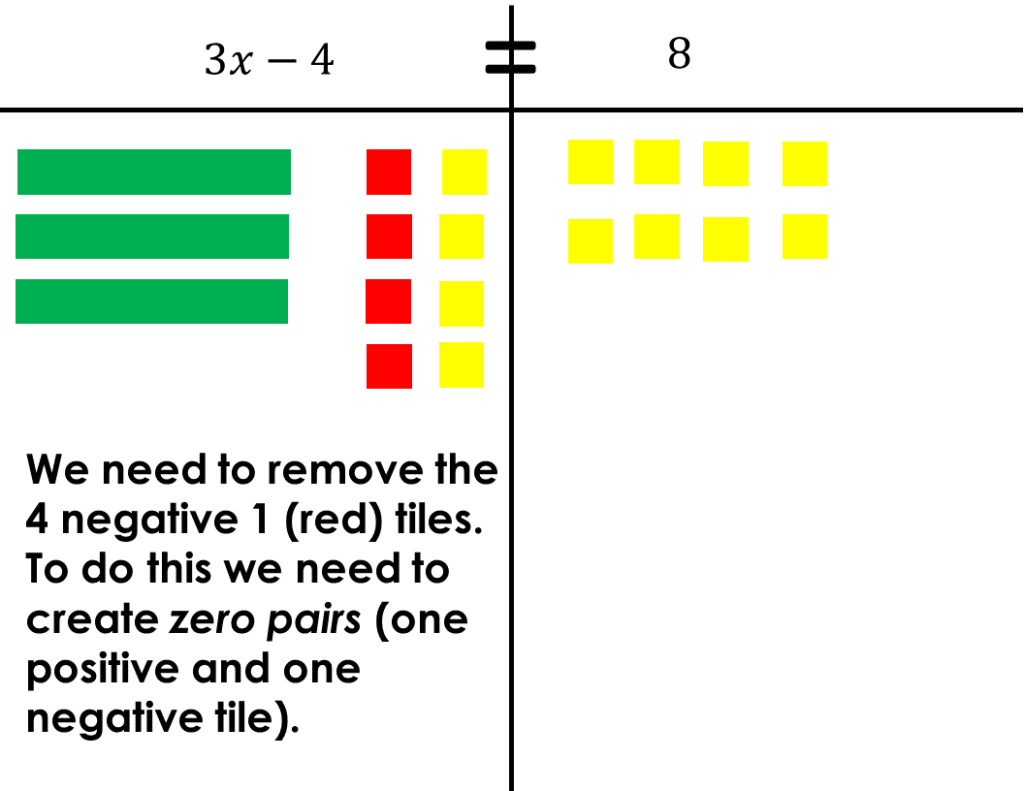
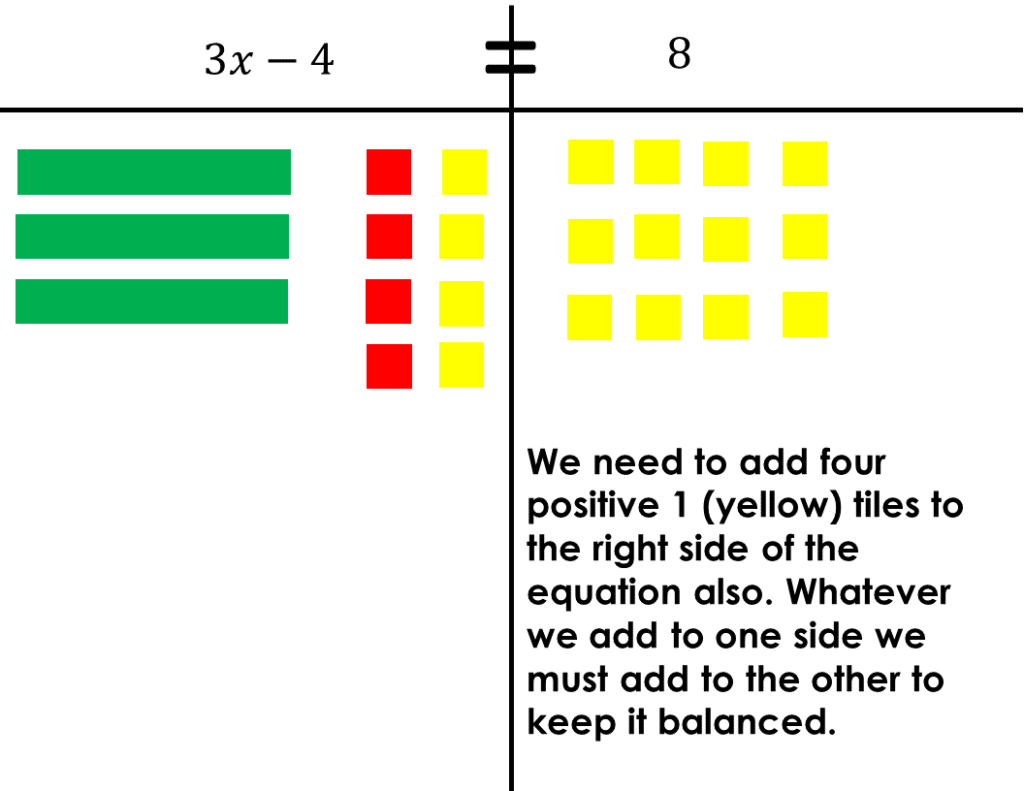
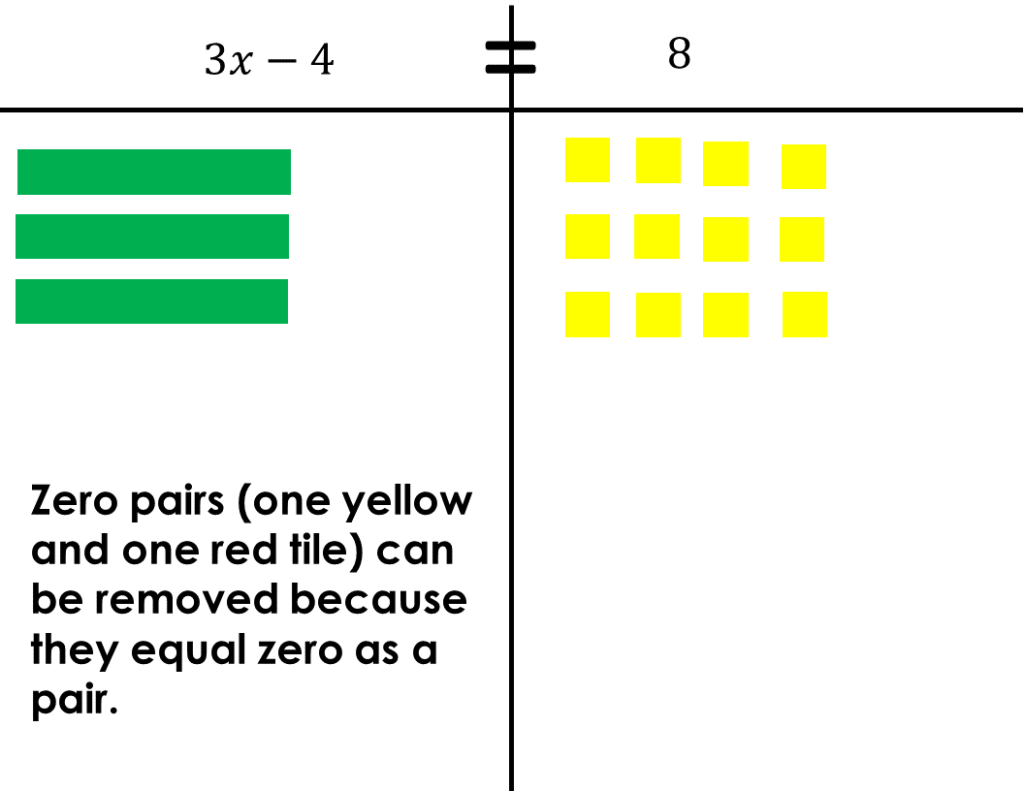
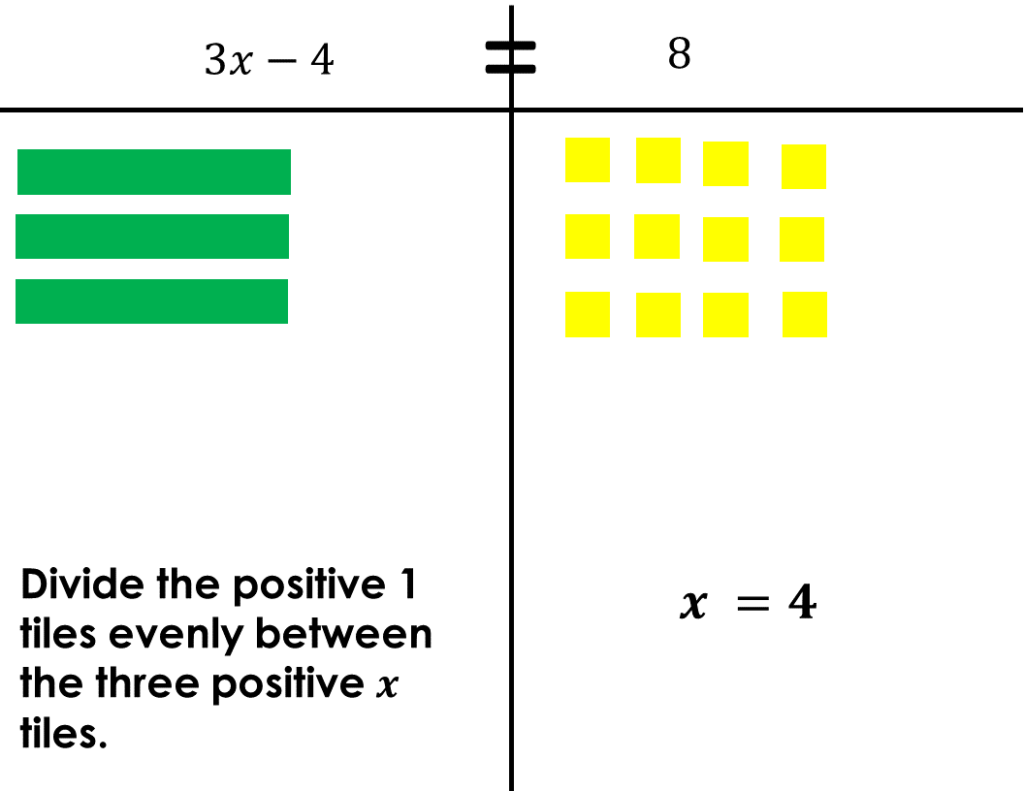
By physically moving and manipulating the tiles, students can see the steps involved in solving the equation. This visual representation helps them understand the concept of balancing equations and reinforces the rules of algebra.
Common Mistakes to Avoid when Using Algebra Tiles
While algebra tiles are powerful tools for learning algebra, there are some common mistakes that students may make when using them. Awareness of these pitfalls can help students avoid them and achieve a deeper understanding of the subject.
One common mistake is misrepresenting the tiles. It is important to assign the correct values to each tile and use them consistently throughout the problem. Mixing up the colors or shapes can lead to confusion and incorrect solutions.
Another mistake is neglecting to perform the same operation on both sides of the equation. For example, if a student removes a tile from one side, they must also remove the same tile from the other side to maintain equality. Failing to do so can result in an incorrect solution.
Lastly, students may rely too heavily on the tiles and struggle to transition to symbolic notation. While algebra tiles provide a concrete representation of abstract concepts, it is important for students to gradually reduce their reliance on the tiles and become comfortable with symbolic notation.
By being aware of these common mistakes, students can use algebra tiles effectively and avoid potential pitfalls in their learning journey.
Conclusion
Algebra tiles are powerful tools that unlock the mystery of solving equations. They bridge the gap between abstract mathematical concepts and the concrete world, providing a hands-on approach to learning algebra.
By using algebra tiles, students can visualize and manipulate equations, leading to a deeper understanding of algebraic concepts. The tactile nature of the tiles engages multiple senses, enhancing the learning experience and promoting retention.
With algebra tiles, students can solve one-step and two-step equations and develop critical thinking and problem-solving skills. However, it is important to be aware of common mistakes and gradually transition to symbolic notation.
In conclusion, algebra tiles are a valuable resource for students learning algebra. They provide a visual and tactile representation of abstract concepts, making algebra more accessible and enjoyable. By incorporating algebra tiles into the learning process, students can build a solid foundation in algebra and excel in their mathematical studies.
Check out the blog Graphing Linear Equations for more teaching suggestions.
For a free lesson on Writing Expressions and Equations click the picture below.
